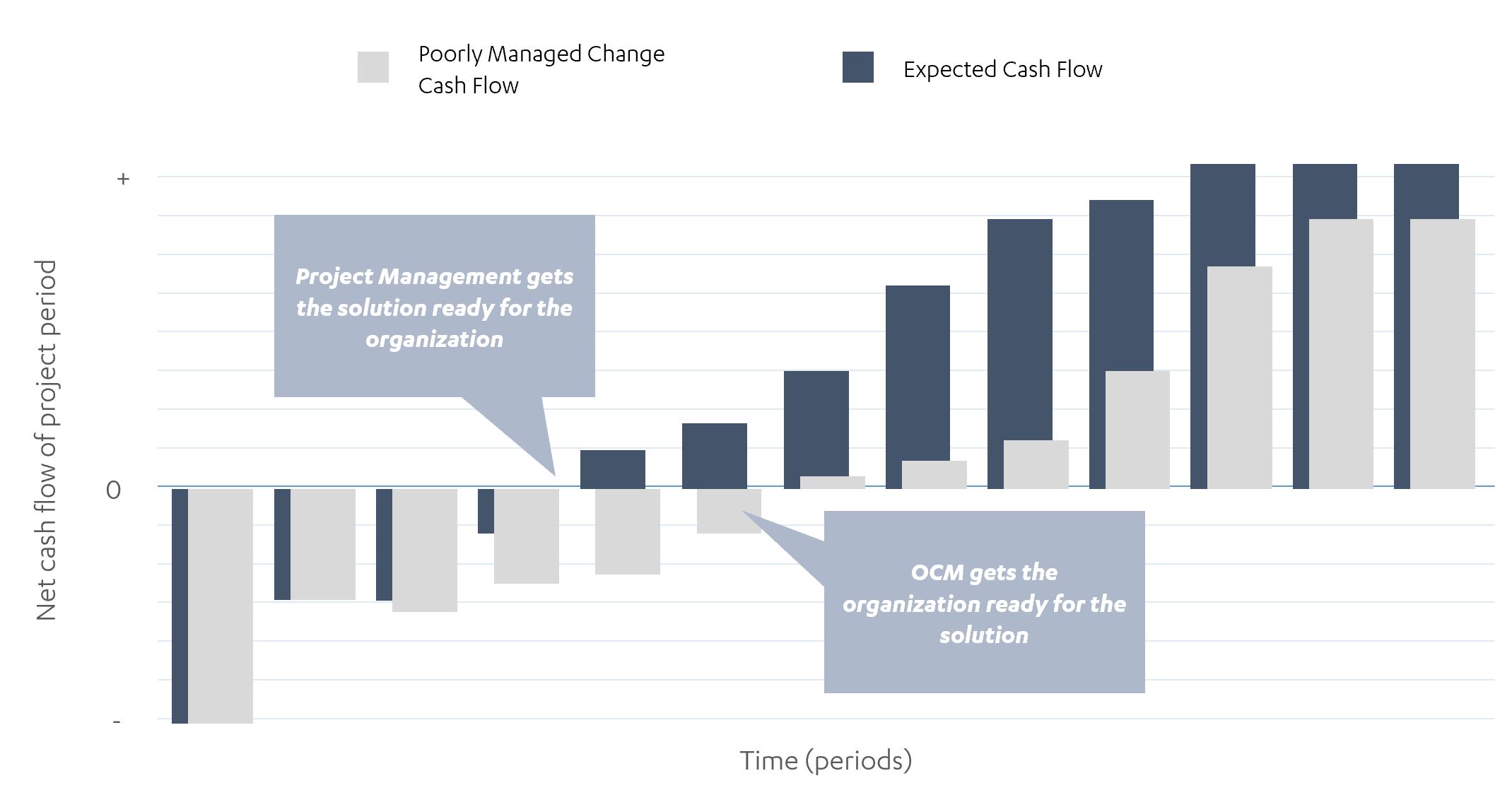Adoption & Organizational Change Management
Supporting individual changes to achieve organizational success.
Organizational Change Management - The human side of digital transformation.
The creation of a good Organizational Change Management (OCM) plan starts at the beginning of any project because the fundamental technical configuration of the solution can impact end users, and end user requirements can drive those base configurations.
Long View uses the PROSCI OCM principles and ADKAR Model for the Adoption framework, which drives powerful results by supporting individual changes to achieve organizational success. We also leverage the Microsoft Adoption and Change Management information to guide our Long View Adoption framework.
OCM - the human side of the transformation - focuses on the activities required to prepare your organization for the delivered change. It facilitates the transition from the old way of working to the future state and embeds the change as the new norm.
At a Glance:
- The application of a structured process and set of tools for leading the people side of change to achieve a desired outcome.
- A leadership competency for enabling change within an organization.
- A strategic capability designed to increase change capacity and responsiveness.
Cash Flow – Expected vs. Poorly Managed Change

This process includes the following steps:
- Demonstrate technology and explain the realm of the possible to key stakeholders: Helps baseline conversations and analysis and can help identify new opportunities for success.
- Determine priorities for the project and technical solution, and how they support organizational goals and objectives.
- Wants: Strategic, tactical, and technical.
- Dependencies: Both tactical and technical, such as other initiatives that may impact end users.
- Gather user requirements from key stakeholders using methods like personas workshops. Engage all major populations within the organization by role and functional area and Create personas to use as guides for communication and training. Identify key use cases to use as early success stories within the communications and training.
- Design a governance plan to support priorities based on user requirements: User governance including rules, standards, best practices for usage of all features and information types. Technical governance including configuration to enable the user governance, and limitations impacting user governance and ongoing governance framework to address new and changing features in the solution ecosystem.
- Develop training and communications plans to support implementation and adoption.
- Deploy the adoption plan to coordinate the execution of the technical, communication and training activities.
OCM Methodology
For OCM, Long View uses a phased PROSCI methodology to design a process to align change management with business results, which includes:
Preparing for Change:
- Determine the impact on end users;
- Determine key resistance factors; and,
- Determine Governance for the technology.
Managing Change:
- Coordinate creation and implementation of the Training and Communication Plans:
- Create specific messaging and deliver through planned methods;
- Create training content; and,
- Deliver communications messages and training as per the Adoption plan that coordinates their delivery with the timing of the technical implementation.
Reinforcing Change:
- Training and communication do not end after the initial roll-out;
- Build in a framework to continue to reinforce the changes:
- Adoption success stories from within the organization;
- Lunch and Learn sessions to do deeper dives on specific functionality;
- As new features are released, conduct mini-OCM cycles to communicate and train users on the new and tips on existing features;
- Working on individual outcomes following the ADKAR model (Awareness, Desire, Knowledge, Ability, and Reinforcement); and,
- Driving organizational business results and desired outcomes (executive decisions and actions).
OCM Plan
Long View’s OCM plan is made up of the following components:
Supporting OCM Plans
Those four (4) core plans are supported and informed by the following three (3) supporting OCM plans:
Executive Sponsor Plan
This will guide how the executive sponsor will support and participate in the project. In addition it will map out where the change manager can help support the Executive Sponsor to help them be successful in their role.
- Supports: Awareness, Desire, Reinforcement
- Target: Executive Sponsor
Coaching Plan
The frontline managers are critical for end users to understand why they should support and participate in the change. The coaching plan is how the project will support the frontline manager and give them the resources needed to support their staff effectively.
- Supports: Awareness, Desire, Knowledge, Ability, Reinforcement
- Target: Frontline Managers
Resistance Management Plan
There are barriers to adopting new technology, and it is critical that we address those items. It will feed into the Coaching plan, communication and training plans, and affect how we create motivation for the end users as part of the ADKAR model.
- Supports: Desire
- Target: Project PM and Change Manager to incorporate resistance management into OCM Plans.
